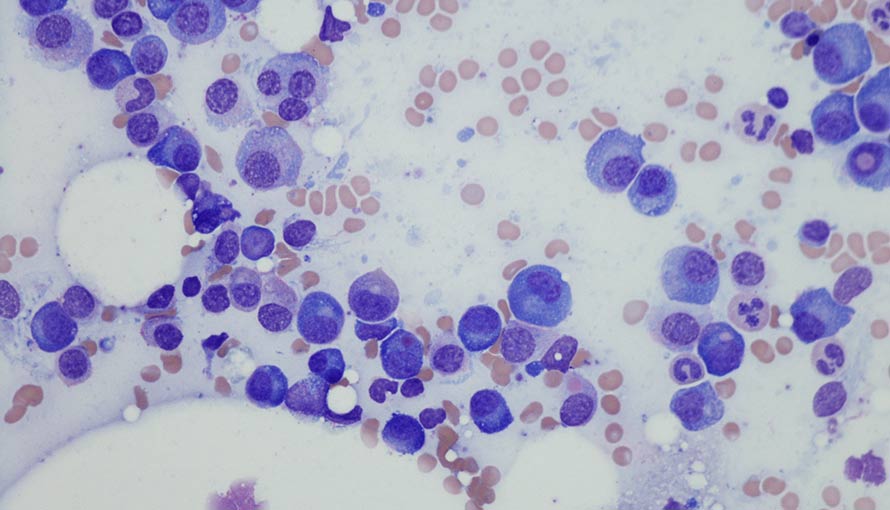Is Myeloma a Blood Cancer?

Myeloma is a type of blood cancer, or hematological malignancy that involves specialized cells called plasma cells which are responsible for the production of antibodies. Unlike leukemia, a cancer of the immature blood cells you may have heard about, myeloma cells do not usually circulate in the blood stream but typically stay in the bone marrow. The problems myeloma cells cause and treatments used to treat myeloma are also different from leukemia.
What are plasma cells?
Plasma cells are located in the bone marrow. It’s important to note that bone marrow plasma cells are not the same thing as plasma, which is the clear, protein-containing liquid component of the blood.
Healthy bone marrow plasma cells have learned to make special proteins called antibodies (or immunoglobulins), that recognize infections from for example viruses or bacteria and help the immune system get rid of them. However, if these plasma cells become cancerous they “blindly” produce useless antibodies or antibody fragments called light chains that can cause harm. Most of the time myeloma cells are distributed throughout the bone marrow but sometimes cancerous plasma cells can occur in just one location and then the disease is called “solitary plasmacytoma”.
How is myeloma treated?
Since myeloma is distributed throughout the bone marrow systemic treatments are used to destroy cancerous cells throughout the entire body. A lot of progress has been made since the late 1990s in the systemic treatment of multiple myeloma. Treatments have become better tolerated and more effective at treating myeloma and prolonging life. In broad terms, treatment is divided into induction with goal to achieve a remission, consolidation, where the remission is consolidated and often deepened, and maintenance which aims to keep the myeloma under control for a long time. Consolidation is the one treatment phase where conventional chemotherapy in the form of high dose chemotherapy followed by peripheral blood stem cell transplant using the patient’s own stem cells still has an important role. Otherwise, systemic treatment mostly uses non-chemo anti-myeloma drugs that exploit special susceptibilities of myeloma cells or guide the immune system to attack myeloma. In addition to treatment directed at myeloma cells, supportive treatment is added to help counteract the negative effect myeloma can have on the bones. Sometimes localized treatments such as radiation, minimally invasive or bone stabilizing surgical procedures are used to treat pain or stabilize affected bones.
Plasmacytoma affects only one location and can therefore be treated with localized treatments, usually radiation alone, sometimes with surgery with or without radiation.
Multiple myeloma treatment at Moffitt Cancer Center
Moffitt Cancer Center’s Malignant Hematology Program is home to a number of oncologists who specialize in the diagnosis and treatment of blood cancers, including myeloma. Here, in one convenient location, patients can consult with:
- Hematologists
- Medical oncologists
- Radiation oncologists
- Surgeons
- Immunotherapists
- Blood and bone marrow transplant specialists
- Supportive care providers
Medically reviewed by Frederic Reu, MD, Malignant Hematology.
A physician’s referral is not required to schedule a consultation at Moffitt. To request an appointment, call 1-888-663-3488 or submit a new patient registration form online.
